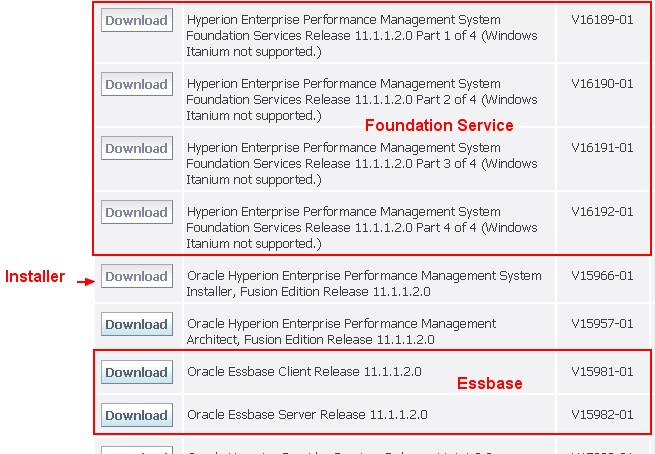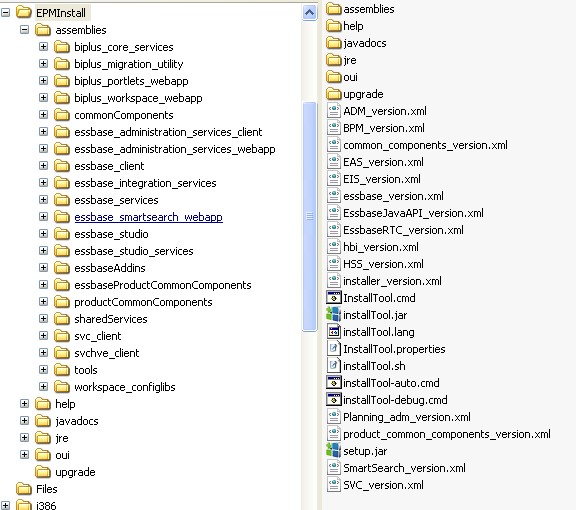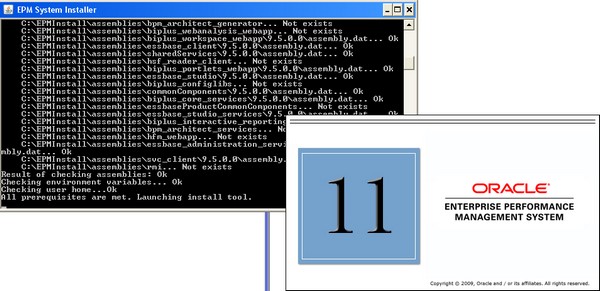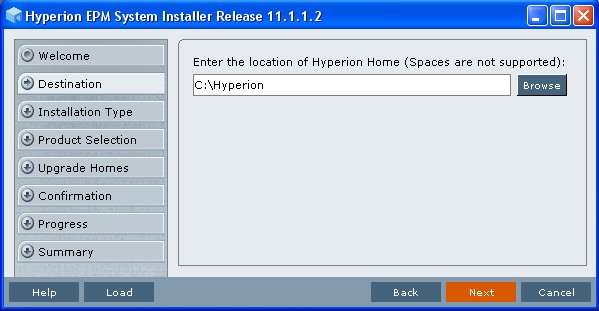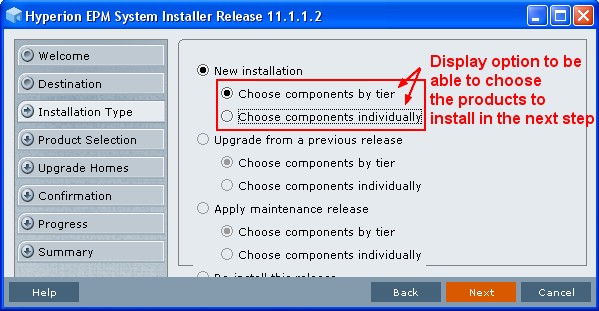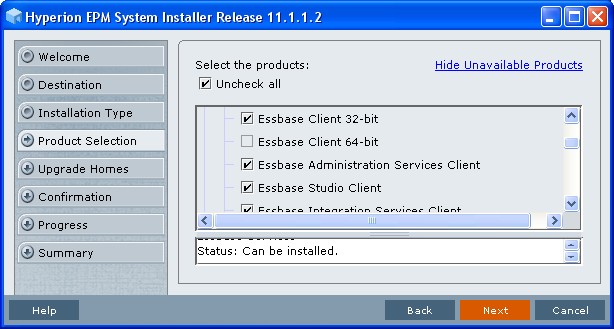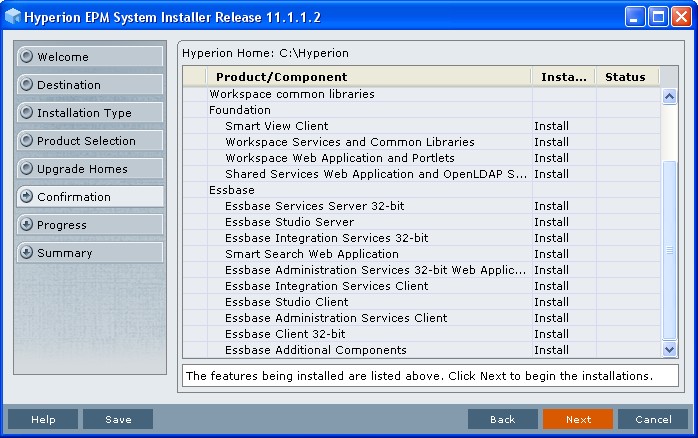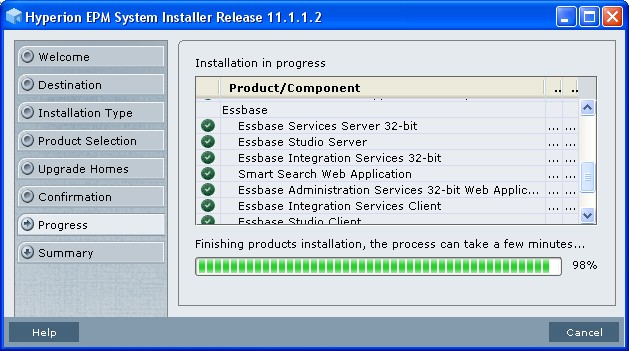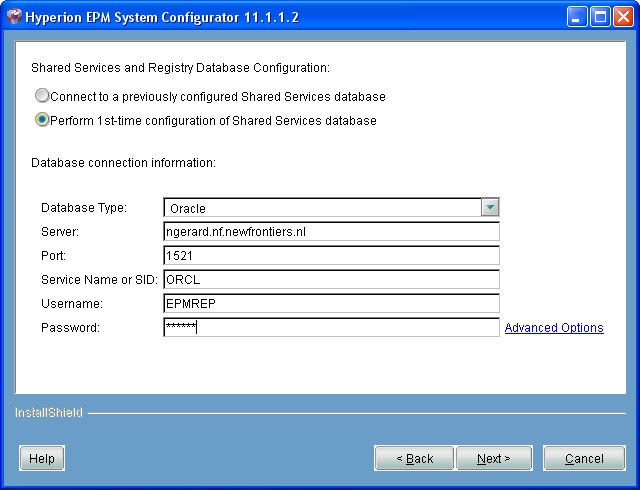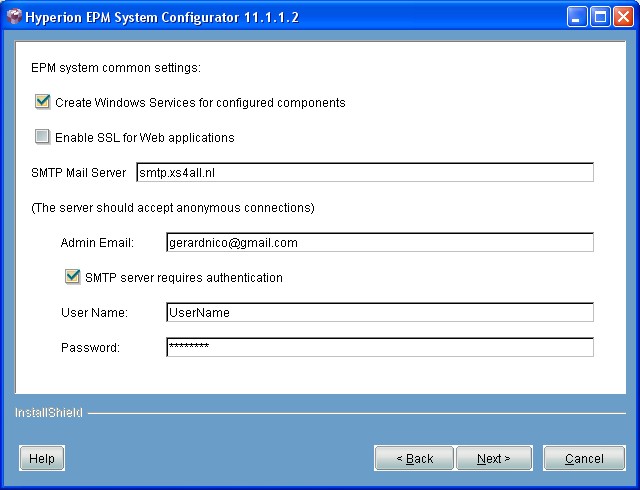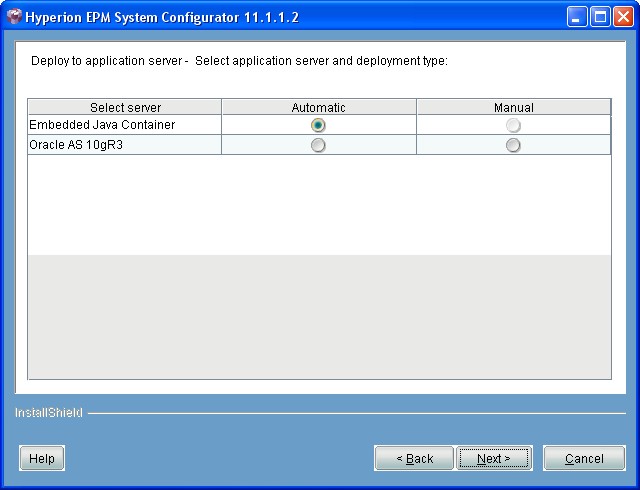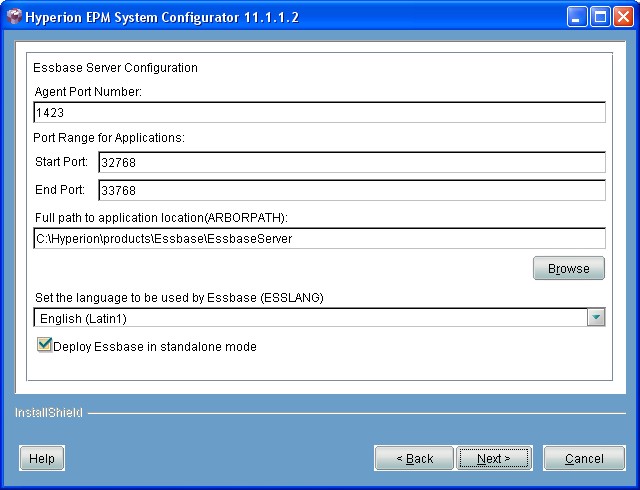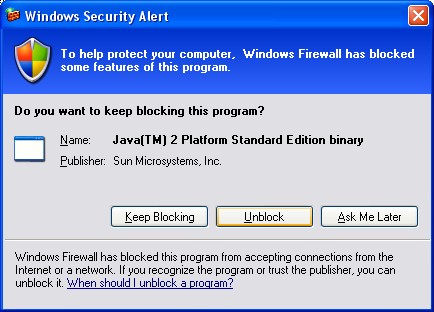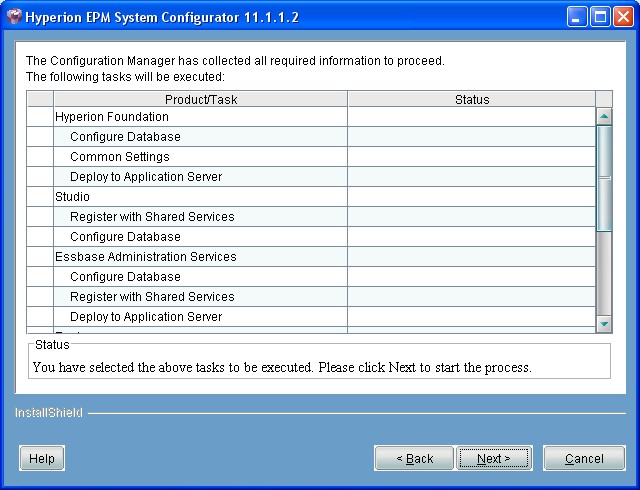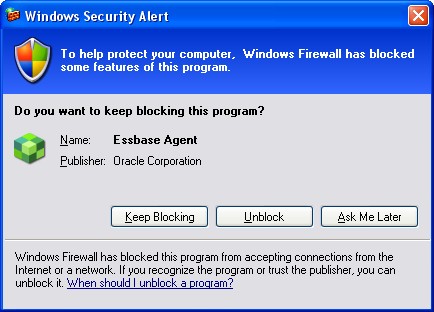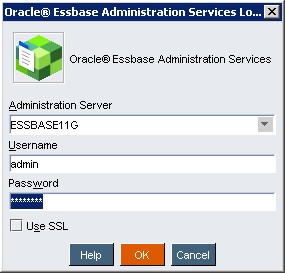Prerequisites
- If you install it on a DHCP computer : Sitemap
- clean up environment variable for Essbase (as Oracle Hyperion - HYPERION HOME)
Articles Related
Edelivery - Get the files
Download the following files from the “Oracle Enterprise Performance Management System” page of the Oracle® E-Delivery (http://edelivery.oracle.com/) site.
- EPM System Installer
- ZIP files for the products you want (known as installation assemblies file)
For this installation, I downloaded
- the installer
- and essbase
Edelivery evolve with new version. If you don't find the above file, just click on the readme button of the media pack to get more information by Licensed Component. Example for Essbase with the Oracle Enterprise Performance Management System (11.1.2.2.0) Media Pack for Microsoft Windows x64 (64-bit):
- EPM System Release 11.1.2.2.0 for Microsoft Windows (64-bit) Part 1
- EPM System Release 11.1.2.2.0 for Microsoft Windows (64-bit) Part 2
- EPM System Release 11.1.2.2.0 for Microsoft Windows (64-bit) Part 3
- EPM System Release 11.1.2.2.0 for Microsoft Windows (64-bit) Part 6
- EPM System Release 11.1.2.2.0 Client Installers for Microsoft Windows
- EPM System Release 11.1.2.2.0 for Microsoft Windows (64-bit) Oracle HTTP Server
- Oracle Hyperion Data Integration Management Adapters Release 11.1.1.1.0
- Oracle Identity Management 11g Patch Set 5 (11.1.1.6.0) for Microsoft Windows x86 (64-bit)
EPM System Installer
EPM System Installer enables you to install, configure, and deploy multiple products on a machine at one time. EPM System Installer installs components in the correct order, so you can select as many products as you want to install on a machine at one time.
The following EPM System products are not installed and configured using EPM System Installer:
- Oracle's Hyperion® Data Integration Management (see the Hyperion Data Integration Management Installation Guide)
- Data Integration Management Adapters. (see the Hyperion Data Integration Management Installation Guide)
- Oracle Hyperion Data Relationship Management (see the Oracle Hyperion Data Relationship Management NTier Installation Guide)
Assemble the files
If you are installing from a network drive, map this drive and avoid spaces in the path.
- Unzip the EPM System Installer into one directory for instance EPMInstall
- Unzip the installation assemblies into the same directory
If you are prompted that any files or common components already exist, click Yes to overwrite the files.
The /assemblies directory should include a subdirectory for each product that you want to install on this machine. Ensure that the /assemblies directory looks as follows:
assemblies/
NameOfTheProduct/
VersionOfTheEPMProduct/
assembly.dat
Installation
To install EPM System products from Windows :
- Double-click installTool.cmd in the root directory to which you extracted the EPM System Installer files.
- or from a Windows console, change to the root directory to which you extracted the EPM System Installer files and enter installTool.cmd -console.
The installer launch and verify the prerequisites :
Choose your language and you obtain the first installation screen :
Hit next :
The destination path cannot contain spaces; for example, C:\Program Files is not acceptable (unless you use short path notation).
The destination you specify becomes the Hyperion home directory.
Hit next, choose a display option.
For this tutorial, I choosed the display option “Choose component individually”.
The products that appear in the selection box are based on the product that you unzipped into the installation directory
Verify that you have all the products you want and hit the next button. Then, the summary windows appear.
Review the summary of products to be installed. If necessary, click Back and make corrections. Click Next to begin the installation.
The progress is then reported in the dialog and take a long time.
After the installations are complete, the ‘Summary’ step shows the status of the installed products:
Then, you can press :
- the “Configure” button and the EPM System Configurator was launched.
- the “Finish” button and launch the “EPM System Configurator” (available on the Windows Start Menu under All Programs / Oracle EPM System / Foundation Services / EPM System Configurator )
Configuration
Prerequisites - Creation of the metadata repository in Oracle
Two repository database are necessary :
- one for the shared service
In this tutorial, only one database account/schema is used (EPMREP created below) but it's a best practice to create two differents accounts.
Connect as SYS as sysdba and run the script below. If you don't know your connection parameters, see this article : Oracle Database - How to retrieve the connect descriptor parameters? (host, port, service name and SID).
CREATE USER EPMREP
IDENTIFIED BY EPMREP
DEFAULT TABLESPACE USERS
TEMPORARY TABLESPACE TEMP
PROFILE DEFAULT
ACCOUNT UNLOCK;
-- 1 Role for EPMREP
GRANT CONNECT TO EPMREP;
ALTER USER EPMREP DEFAULT ROLE ALL;
-- 12 System Privileges for EPMREP
GRANT CREATE SYNONYM TO EPMREP;
GRANT ALTER SESSION TO EPMREP;
GRANT CREATE VIEW TO EPMREP;
GRANT CREATE SESSION TO EPMREP;
GRANT CREATE SEQUENCE TO EPMREP;
GRANT CREATE PROCEDURE TO EPMREP;
GRANT ALTER USER TO EPMREP;
GRANT CREATE TRIGGER TO EPMREP;
GRANT CREATE TABLE TO EPMREP;
GRANT SELECT ANY DICTIONARY TO EPMREP;
GRANT CREATE TYPE TO EPMREP;
GRANT ALTER SYSTEM TO EPMREP;
-- 1 Tablespace Quota for EPMREP
ALTER USER EPMREP QUOTA UNLIMITED ON USERS;
EPM System Configurator
Start the “EPM System Configurator” available:
- in a GUI mode > on the Windows Start Menu under All Programs / Oracle EPM System / Foundation Services / EPM System Configurator
- of in a console mode with the following script located in EPM_ORACLE_HOME\common\config\11.1.2.0\)
configtool.bat -console
configtool.sh -console
Select the products and tasks to configure for this machine, or click Next to select all the required tasks.
Shared Services Configuration
Configuration of EPM - Oracle's Hyperion® Shared Services
To help you to verify the smtp account, you can go through this article : Email - How to verify your SMTP connection and parameters (TSL/SSL) with TELNET ?
Essbase Administration Services, Studio, workspace
Hit the ‘Next’ button and you are prompted for specific database system settings for :
You can use the previously configured database or add an other one.
Repository Directory : Specify the directory where the Reporting and Analysis repository data is stored. For example:
HYPERION_HOME/products/Foundation/worskpace/data/directoryName.
If you are replicating repositories, specify a write-able, shared drive. Don't upgrade
If you are upgrading from a previous release, ensure that the repository location of the previous release is specified.
Port Ranges : Specify the port range to use for EPM Workspace services.
Application Server
Application Server Deployment
| Column | Description |
|---|---|
| Ear/War | the components to deploy |
| Name | Displays the server name |
| Port | Accept the default port, or, to change the default, enter a port number that does not conflict with other applications installed on your machine. |
| SSL Port | Accept the default port, or specify the SSL port to use for automatic deployment. Specifying this port sets up SSL using the Java application server's default certificates. |
| Advanced Set up | If you have set up a cluster, or plan to set one up, click “Set up.” See Cluster Setup. If you do not select “Set up,” EPM System Configurator adds this deployment to a default cluster with the name Default. |
During Deployment, EPM System Configurator deploys the application to:
HYPERION_HOME/deployments/AppServNameAndVersion
Under this directory, the bin directory contains start and stop scripts for all deployed applications. For each application, there is also a setCustomParamsProduct.bat|sh file, where JAVA_OPTIONS can be changed when starting using start scripts.
Web Server for Workspace
Essbase configuration
- The port of the Essbase - Server Agent
ESSLANG
The ESSLANG environment variable on the Essbase Server computer must retain the locale value of an application for as long as that application is in use.
If the ESSLANG variable is changed after applications are created on an Essbase Server computer, those applications cannot be started.
Deploy Essbase in standalone mode
Select to use legacy security for Essbase Server instead of Shared Services security.
By selecting this option, you can shut down Shared Services and Oracle to maximize memory
Resume
Configuration of Essbase Server
You have to register first against the Essbase - Servers before you can use it.
Microsoft Windows XP [Version 5.1.2600]
(C) Copyright 1985-2001 Microsoft Corp.
C:\Documents and Settings\Nicolas>cd C:\Hyperion\products\Essbase\EssbaseServer\bin
C:\Hyperion\products\Essbase\EssbaseServer\bin>essbase
[Mon Jun 29 11:04:28 2009]Local/ESSBASE0///Info(1051283)
Retrieving License Information Please Wait...
[Mon Jun 29 11:04:28 2009]Local/ESSBASE0///Info(1051286)
License information retrieved.
......................
.......................
Welcome to the Essbase Server.
Before using this product, you will need to register your personal
details, including the name of your company or organization, your own
name (which will be used to create your user id), and a secret system
password which you will need to use each time you run the product.
Be sure to choose a password which is easy to remember, but difficult
to guess (you may wish to write it down and keep it in a safe place).
The password must be at least 6 characters long, and it can consist
of any number of letters or spaces.
Enter your company name []: NewFrontiers
Enter your name []: gerardnico
Enter the system password []: ******
Re-Enter the system password []: ******
You have entered the following details:
Company name: NewFrontiers
Your name: gerardnico
These will be used to create the initial system security information
including the system administrator.
Are these details correct? (1-yes,2-no): 1
Registering user information
Creating initial system security defaults...
[Mon Jun 29 11:06:21 2009]Local/ESSBASE0///Error(1053002)
Cannot create application directory: C:\Hyperion\products\Essbase\EssbaseClient\app\$DM_APP$ [No such file or directory]
[Mon Jun 29 11:06:21 2009]Local/ESSBASE0///Warning(1051221)
Creation of Datamining Object Management Application Fails with status [1053002]
[Mon Jun 29 11:06:21 2009]Local/ESSBASE0///Info(1054032)
Essbase Alert function failed to register: [@ESSBASEALERT] not enabled
Startup sequence completed
Security is enabled
Logins are enabled
Essbase Default Storage type is Multidimensional
[Mon Jun 29 11:06:22 2009]Local/ESSBASE0///Info(1051051)
Essbase Server - started
Waiting for Client Requests...
Post Task
- revoke the right for the repository user(s)
-- should be revoked after Installation of EPM
REVOKE ALTER SYSTEM TO EPMREP;
- create a batch file to start the services
Connection
During the initialization, the administrator is created with the following credential :
- Id : admin
- Password : password
You can connect to an Essbase - Servers with :
If you can't connect for any reasons, first perform an Epm System Diagnostic to find the culprit.
Support
The procedure you should follow if an error occurs is to try to run any application (for instance, Essbase) in a command window. In this way, any errors will be displayed in the window.
Unable to Bind Host Server Socket On Port [1423]
You can get this error when you start the essbase server script and than the essbase server service is started. To resolve it, stop the Essbase Server Service.
E:\Hyperion\products\Essbase\EssbaseServer\bin>essbase
[Thu Oct 29 05:41:41 2009]Local/ESSBASE0///Error(1042010)
Network Error [10048]: Unable to Bind Host Server Socket On Port [1423]
Fatal Error: Error initializing network
Network communication with the server failed
Network communication with the server failed
Connection refused: connect
It's an error that can be caused by many components of the system and the best way to find the source is to perform an Epm System Diagnostic
EPMINS-01094: User Account Control is enabled
Go to Control Panel > User Accounts > User Accounts > Change User Account Control settings set the adjustable slider to “Never notify” and Click OK. EPM 11.1.2.2 Installer On Windows 2008/Windows 7 64-Bit Environments Causes Errors: EPMINS-01001 and EPMINS-01094
